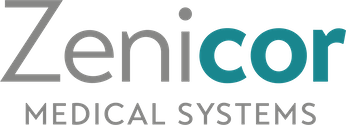Kustannustehokkuus
Primääripreventiivinen seulonta
Cost-effectiveness of population screening for atrial fibrillation: the STROKESTOP study
Lyth, J., Svennberg, E., Bernfort, L., Aronsson, M., Frykman, V., Al-Khalili, F., Friberg, L., Rosenqvist, M., Engdahl, J., & Levin, L. Å. (2023). European heart journal, 44(3), 196–204. https://doi.org/10.1093/eurheartj/ehac547
Abstract
Aims: Previous studies on the cost-effectiveness of screening for atrial fibrillation (AF) are based on assumptions of long-term clinical effects. The STROKESTOP study, which randomised 27 975 persons aged 75/76 years into a screening invitation group and a control group, has a median follow-up time of 6.9 years. The aim of this study was to estimate the cost-effectiveness of population-based screening for AF using clinical outcomes.
Methods and results: The analysis is based on a Markov cohort model. The prevalence of AF, the use of oral anticoagulation, clinical event data, and all-cause mortality were taken from the STROKESTOP study. The cost for clinical events, age-specific utilities, utility decrement due to stroke, and stroke death was taken from the literature. Uncertainty in the model was considered in a probabilistic sensitivity analysis. Per 1000 individuals invited to the screening, there were 77 gained life years and 65 gained quality-adjusted life years. The incremental cost was €1.77 million lower in the screening invitation group. Gained quality-adjusted life years to a lower cost means that the screening strategy was dominant. The result from 10 000 Monte Carlo simulations showed that the AF screening strategy was cost-effective in 99.2% and cost-saving in 92.7% of the simulations. In the base-case scenario, screening of 1000 individuals resulted in 10.6 [95% confidence interval (CI): -22.5 to 1.4] fewer strokes (8.4 ischaemic and 2.2 haemorrhagic strokes), 1.0 (95% CI: -1.9 to 4.1) more cases of systemic embolism, and 2.9 (95% CI: -18.2 to 13.1) fewer bleedings associated with hospitalization.
Conclusion: Based on the STROKESTOP study, this analysis shows that a broad AF screening strategy in an elderly population is cost-effective. Efforts should be made to increase screening participation.
Tandvårds- och läkemedelsförmånsverket, The Dental and Pharmaceutical Benefits Agency, TLV. Health economic evaluation of Zenicor-EKG in atrial fibrillation, Feb 7th 2022
Tandvårds- och läkemedelsförmånsverket (2022)
The Swedish Dental and Pharmaceutical Benefits Agency, TLV, has made a health economic assessment of different methods for diagnosing atrial fibrillation in primary care. The results show that the care pathway with Zenicor-ECG is more efficient for healthcare.
Cost-effectiveness of screening for atrial fibrillation in a single primary care center at a 3-year follow-up
Ghazal F., Aronsson M., Al-Khalili F., Rosenqvist M & Levin L-Å
Scandinavian Cardiovascular Journal (2022)
A post hoc analysis based on a cross-sectional screening study for AF among 70–74-year old patients, who were registered at a single primary care center, was followed for three years for mortality. Screening for AF among 70–74-year olds in primary care using intermittent ECG appears to be cost-effective at 3-year follow-up with high anticoagulants adherence and no increased mortality.
Kunskapsunderlag: Hälsoekonomisk utvärdering gällande primärpreventiv screening av förmaksflimmer med tum-EKG
Tandvårds- och läkemedelsförmånsverket (2014) (2016)
Osana lääketieteen tekniikkaan keskittynyttä hallituksen arviointityötä, suoritti Ruotsin hammaslääketieteen ja lääkealan virasto TLV arvion primääripreventiivisestä eteisvärinäseulonnasta terveystaloudelliselta kannalta. Se perusti arvionsa StrokeStop-tutkimuksesta saatuihin lukuihin. Raportissa todetaan, että peukalo-EKG:llä tehtävä primääripreventiivinen eteisvärinäseulonta on kustannustehokasta.
Cost-effectiveness of mass screening for untreated atrial fibrillation using intermittent ECG recording
Aronsson, M., Svennberg, E., Rosenqvist, M., Endahl, J., Al-Khalili, F., Friberg, L., Frykman-Kull, V. & Levin, L-Å.
Europace. 2015. Apr 13. 1023-1029
Tukholman Karoliinisessa Instituutissa tehtiin ainutlaatuinen tutkimus, jossa 13.000 henkilöä kutsuttiin eteisvärinän seulontaan käyttäen Zenicor-EKG:tä. Osallistujien joukosta löydettiin 5% uusia kandidaatteja jotka hyötyisivät aivoverenkiertohäiriöitä ehkäisevän lääkityksen aloittamisesta. Tämän terveystaloudellisen tutkimuksen perusteella, joka perustuu STROKESTOP tutkimukseen, todettiin systemaattisen eteisvärinän massa seulonnan Zenicor-EKG:llä olevan kustannustehokasta.
Sekundääripreventiivinen seulonta
A cost-effectiveness analysis of screening for silent atrial fibrillation after ischaemic stroke (Propp-Stopp)
Levin, L., Husberg, M., Doliwa Sobocinski, P., Frykman Kull, V., Friberg, L., Rosenqvist, M. & Davidson, T.
Europace (27.10.2014), verkkojulkaisu
Linköpingissä tutkijat osoittivat Propp-Stopp-tutkimuksesta (ks. linkki) saatujen lukujen perusteella, että hiljaisen eteisvärinän seulonta 75-vuotiailla aivoverenkiertohäiriöpotilailla on erittäin kustannustehokasta ja että hoitokustannuksissa voidaan jopa saavuttaa säästöjä seitsemän vuoden seurannan jälkeen. Tutkimuksissa Zenicor-EKG on osoittautunut sekä tarkemmaksi että kustannuksiltaan edullisemmaksi kuin Holter-EKG.

